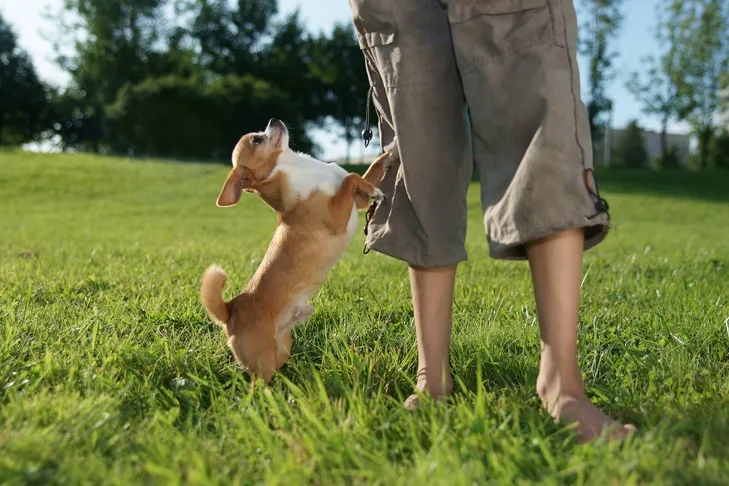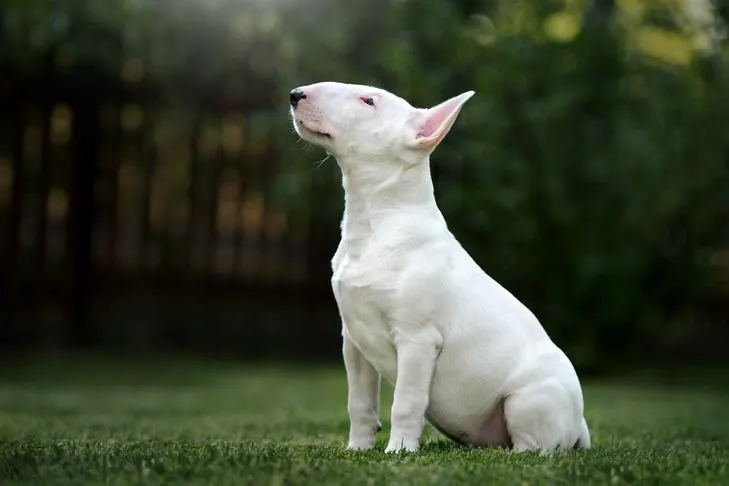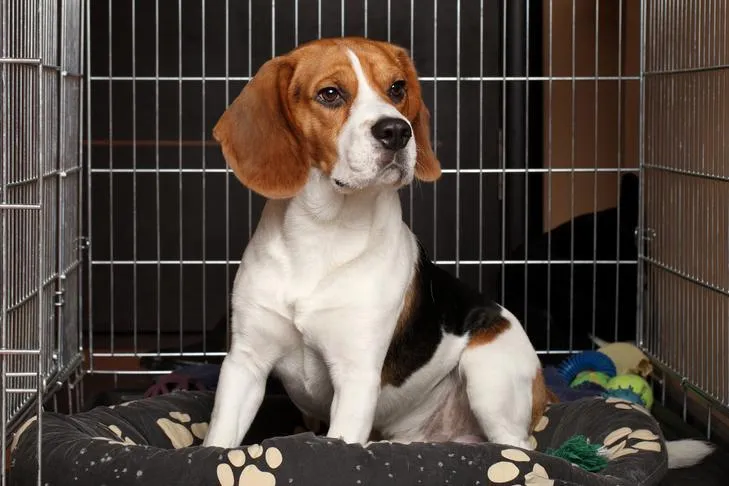Jumping up on people is a natural canine behavior, often driven by a desire for attention or a high-energy greeting. For dogs, it’s an effective way to say hello face-to-face and is almost guaranteed to elicit a reaction. However, from a human perspective, this can be an annoying, messy, and even dangerous habit. Muddy paws can soil clothing, and larger dogs can easily knock over children, seniors, or anyone unprepared for their exuberance. Teaching your dog a more appropriate way to greet people is crucial for their safety and the comfort of others. This guide will help you understand why dogs jump and provide effective training and management strategies to curb this common behavior.
Understanding Why Dogs Jump
Dogs tend to repeat behaviors that consistently earn them rewards. When a dog jumps, the immediate attention they receive—whether positive (petting, praise) or negative (yelling, pushing away)—can reinforce the behavior. Many dogs perceive being pushed away as part of a playful wrestling game, further cementing the jumping habit. Family members, visitors, and even strangers can unknowingly contribute to this cycle by reacting to the jump. To effectively prevent your dog from jumping, you must break this cycle of reinforcement and teach them an alternative, desirable greeting behavior. This means managing their environment to prevent opportunities for jumping and consistently rewarding them for keeping all four paws on the floor.
Training Alternative Greeting Behaviors
Simply ignoring your dog when they jump can be a part of the solution, as it removes the reward of attention. However, it’s also important to teach your dog what to do instead of just what not to do. An alternative, polite greeting gives your dog a clear way to interact that is both safer and more pleasant for everyone involved. Whether you prefer your dog to simply keep all four paws on the floor or to sit politely for greetings, consistency in training is key. Training dog not to jump on guests requires patience and clear communication.
Teaching ‘Four on the Floor’
The “Four on the Floor” method focuses on rewarding your dog for keeping all four paws on the ground during greetings, anticipating and preventing the jump before it happens. This technique helps your dog associate calm, grounded behavior with positive attention and treats.
Here’s how to train “Four on the Floor”:
- Preparation: Have your dog on a leash, and enlist a helper to approach your dog.
- Anticipate and Reward: Before your helper reaches your dog, toss several small, high-value treats onto the floor near your dog.
- Positive Reinforcement: While your dog is busy eating the treats off the floor, have your helper calmly approach and pet them.
- Controlled Retreat: Before your dog finishes the treats, have your helper step back and move away.
- Repetition and Extension: Repeat these steps several times. As your dog gets the hang of it, gradually extend the greeting duration, continuously tossing treats to keep their focus on the floor.
- Fading the Treats: Once your dog consistently keeps all four feet on the ground, allow them to greet your helper before you place the first treat. Slowly reduce the number of treats until the greeting itself becomes the primary reward.
The success of this technique hinges on your ability to be quick with the treats. You need to anticipate your dog’s jumping impulse and provide the reward before they can launch themselves. If your dog jumps, immediately have your helper turn and walk away, and stop giving treats. This teaches your dog that jumping yields no rewards, while keeping their paws on the floor brings positive attention and delicious treats. This method is effective for those wondering how to get a dog to stop jumping up on arrival.
 Small dog jumping up on a person reaching out to pet them
Small dog jumping up on a person reaching out to pet them
Training ‘Sit’ for Greetings
Teaching your dog to sit politely for greetings is another excellent alternative to jumping. This method teaches your dog that a calm, seated position is the key to receiving attention. The moment they stand up, the attention stops, reinforcing the desired behavior.
Follow these steps to teach ‘Sit’ for Greetings:
- Setup: Tether your dog’s leash to a secure object like a doorknob or heavy piece of furniture.
- Initial Approach: Stand several feet away and ask your dog to “Sit.” When they do, calmly walk towards them.
- Consequence for Standing: If your dog stands up as you approach, immediately turn around and walk back to your starting point. Repeat the “Sit” command.
- Reward for Staying Seated: If your dog remains sitting, approach them and offer quiet praise and gentle petting. Continue greeting them as long as they stay seated. As soon as they stand, turn and walk away.
- Increase Excitement: As your dog becomes proficient at sitting calmly for your greetings, you can gradually make your approaches more energetic and exciting to challenge their impulse control.
- Generalize with Others: Once your dog has mastered sitting for greetings with you, repeat the entire process with friends and family members.
Consistent practice is vital. Ensure your dog has a solid “Sit” command without distractions before attempting “Sit” for greetings. Making “Sit” your dog’s default “please” command—asking them to sit before meals, going outside, or receiving toys—will strengthen their understanding and make sitting for greetings much easier to implement.
 Bull Terrier puppy sitting in a grassy yard looking up expectantly
Bull Terrier puppy sitting in a grassy yard looking up expectantly
How to Prevent Jumping While You Train
While you are actively teaching your dog appropriate greeting behaviors, it’s essential to manage their environment to prevent them from practicing the unwanted jumping behavior. Every time your dog jumps and receives any form of attention, the habit is reinforced. Effective management strategies minimize these opportunities, allowing your training efforts to take hold without setbacks. This is especially important for owners who want to stop jumping on guests effectively.
Consider these management tips:
- Designated “Place”: If your dog knows a strong “go to your place” cue, send them to their mat or crate when the doorbell rings or guests arrive. This keeps them safely out of the way until they can be greeted calmly.
- Physical Barriers: Install dog gates at your entranceway to create a barrier between your dog and incoming visitors. This prevents them from rushing to jump on people immediately upon entry.
- Leash Control: Keep your dog on a leash whenever guests are expected or when you anticipate meeting new people. This gives you immediate control to guide them into an appropriate greeting or to redirect their attention.
- Redirection with Toys/Treats: Keep a stash of high-value toys and treats near your front door. When a visitor arrives, you can throw a treat away from the doorway to occupy your dog while your guest enters. Alternatively, your guest can use a treat or toy to reward your dog for a calm, four-paws-on-the-floor greeting.
- Public Encounters: Preventing jumping in public can be particularly challenging, as you can’t expect strangers to adhere to your training rules. Until your dog is consistently greeting friends and family appropriately, try to avoid having them greet strangers. Instead, use a “watch me” cue or a squeaky toy to get their attention and let the stranger pass by without interaction. When your dog is ready for public greetings, clearly communicate the desired procedure to people who wish to interact with your dog, asking them to ignore any jumping behavior. Consistency, whether at home or in public, is paramount to help your dog learn how to say hello politely. You might also want to teach your dog not to jump on furniture as a general rule against jumping how to teach a dog not to jump on furniture.
 Beagle dog sitting calmly in an open dog crate looking outwards
Beagle dog sitting calmly in an open dog crate looking outwards
Conclusion
Teaching your dog not to jump on people is a valuable life skill that fosters positive interactions and ensures safety for everyone. By understanding the motivations behind this natural canine behavior and implementing consistent training strategies like “Four on the Floor” or “Sit for Greetings,” you can guide your dog towards more polite and acceptable ways to greet. Combining these training methods with smart management techniques that prevent opportunities for jumping will accelerate your progress. Remember, patience, consistency, and positive reinforcement are the cornerstones of successful dog training. With dedication, your dog will learn that calm greetings are far more rewarding than jumping, making every hello a pleasant experience for all.
